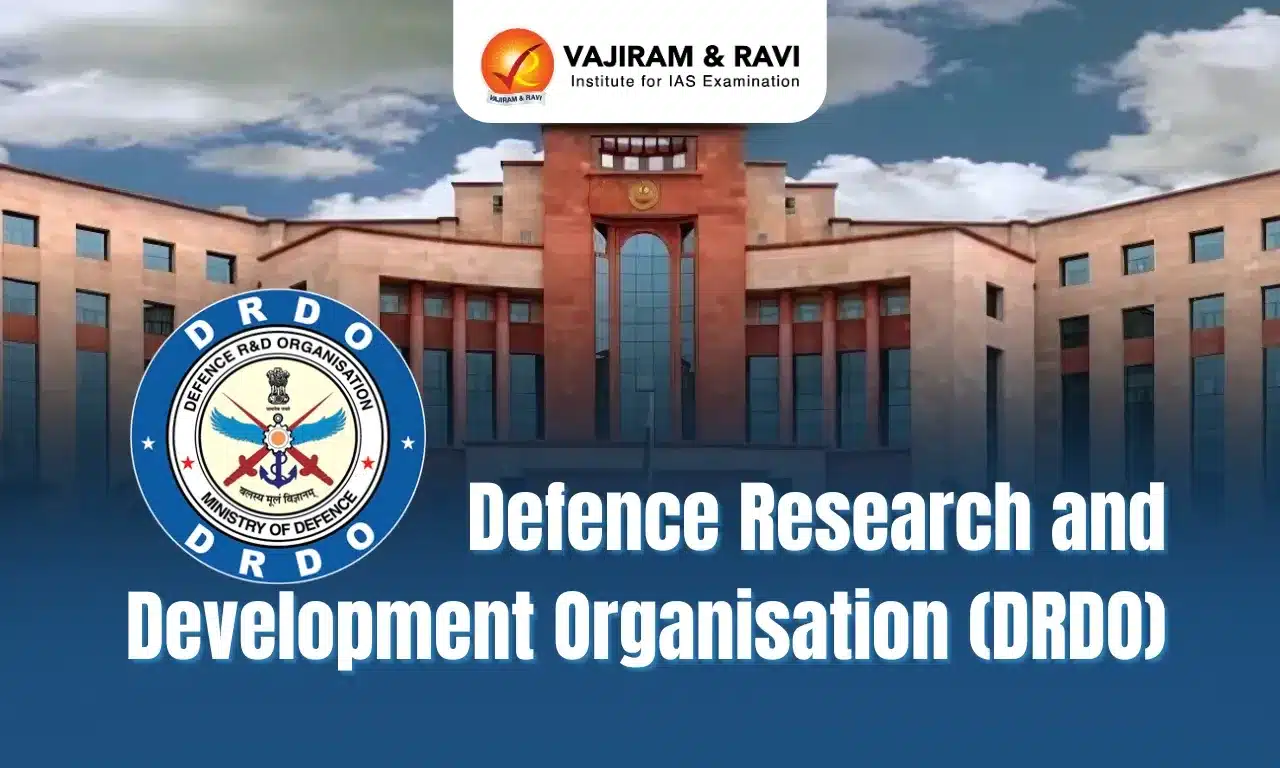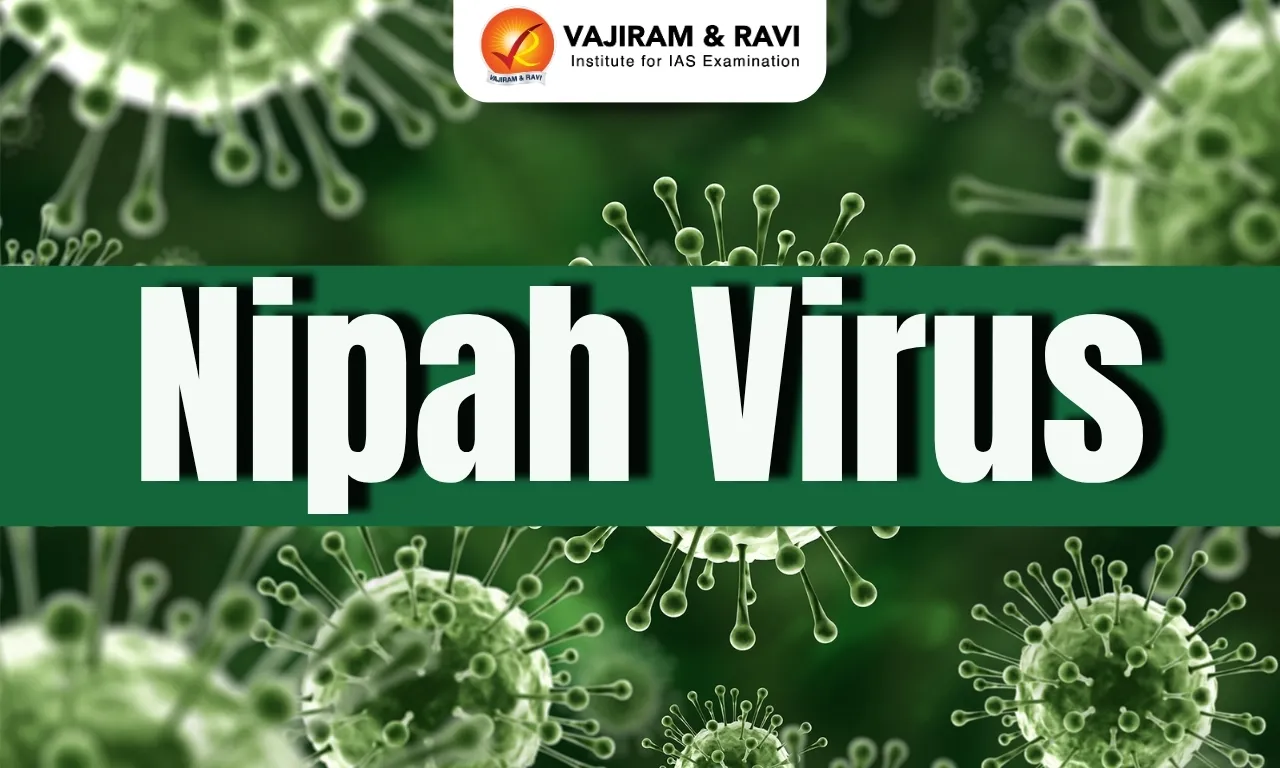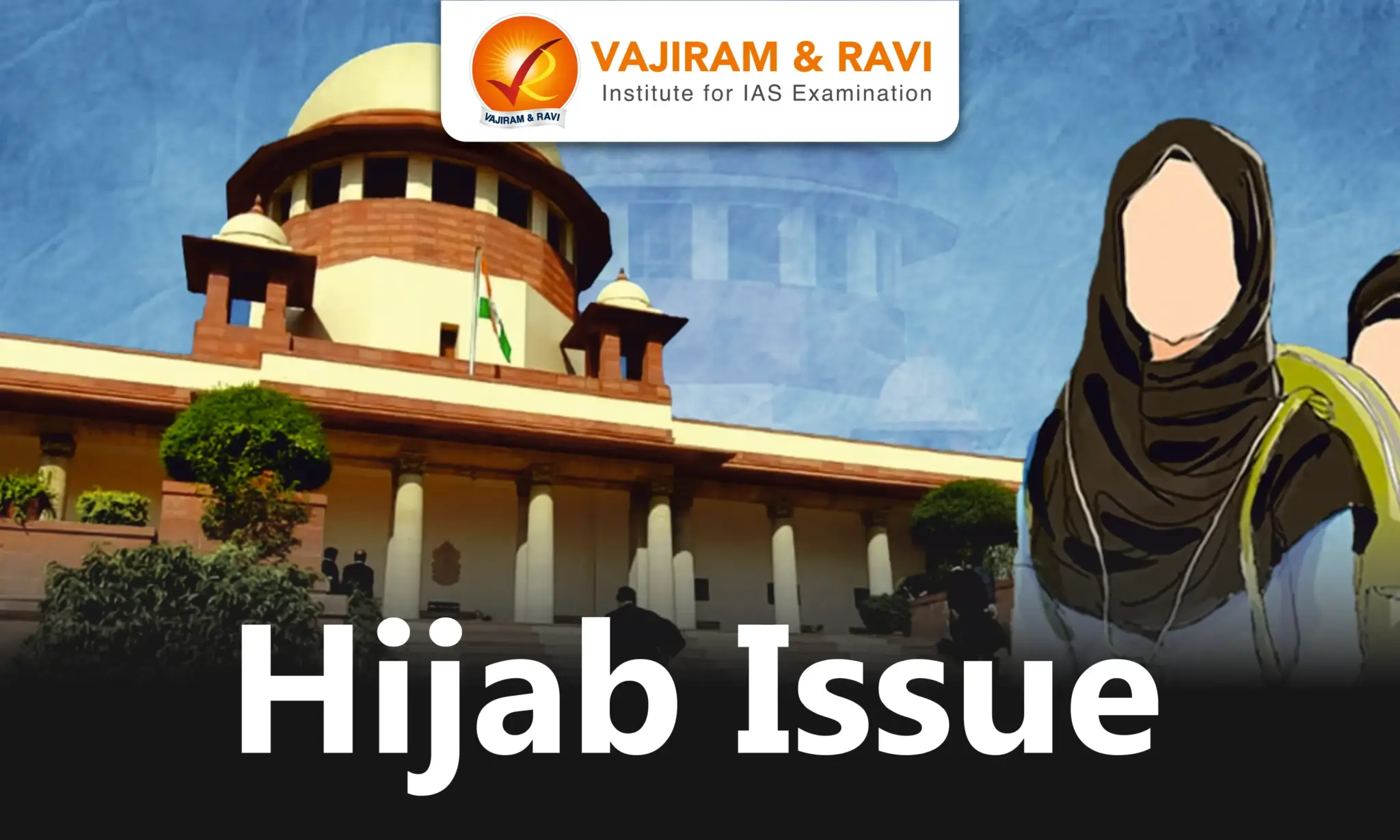India’s defence research capabilities play a strategic role in strengthening national security, upholding territorial sovereignty, and achieving self-reliance or Atma-Nirbharta, in critical defence technologies. Established in 1958 with the motto "Balasya Mulam Vigyanam,'' DRDO undertakes indigenous design and development leading to the production of state-of-the-art weapon systems and technologies for the Indian armed forces.
With a network of more than 50 laboratories across seven technology clusters focusing on diverse defence domains, DRDO’s contributions across missiles, radars, electronics, cyber systems, and combat engineering technologies have given a quantum jump to India’s defence capabilities.
Structure and Functions of Defence Research and Development Organisation (DRDO)
DRDO was formed in 1958 by merging the then-existing Technical Development Establishment (TDEs) of the Indian Army and the Directorate of Technical Development and Production (DTDP) with the Defence Science Organisation (DSO).
Organisational Structure
- Headed by: It is headed by the Secretary, Department of Defence, R & D, and the Director General of DRDO.
- The DG is assisted by scientists designated as Chief Controllers in technology domains.
- Technology clusters: DRDO has seven technology clusters - Aeronautics, Armament, Combat Engineering, Electronics and Communication Systems, Micro Electronic Devices and computational Systems, Life Sciences and Naval Systems.
- Laboratories: It has a network of 53 specialised laboratories across India collaborating with the Armed Forces, industry, and academia.
- These laboratories work under the 7 technology clusters.
Responsibilities and Mandate of DRDO
DRDO is responsible for the indigenous design, development and production of state-of-the-art weapon systems required by the Armed Forces.
- Its mandate is to provide futuristic defence technologies in areas like missiles, armaments, electronics, combat vehicles, etc.
- DRDO also develops countermeasures for NBC threats, advanced materials, robotics, artificial intelligence, etc. for national security.
- It supports partner Indian industries using Transfer of Technology to enhance the technical capabilities of the defence ecosystem to make it globally competitive.
- Key objectives are achieving self-reliance and building indigenous R and D and manufacturing capabilities.
Technology Clusters and Notable Achievements of DRDO
DRDO specializes in a wide range of defence technology domains that are critical for building indigenous military capabilities. The seven technology clusters, their objectives and key products are as follows:
- Aeronautics systems (Aero): this cluster has the objective to develop unmanned aerial vehicles, aerostats, lighter-than-air systems, aerogas turbine engines, avionics, parachutes, and decelerators.
- Labs attached: Aerial Delivery Research and Development Establishment (ADRDE), Aeronautical Development Establishment (ADE), Centre For Airborne System (CABS), Centre for Military Airworthiness and Certification (CEMILAC), Gas Turbine Research Establishment (GTRE)
- Notable achievements: Combat Aircraft - LCA Tejas; UAVs - Lakshya, Nishant; Aerostats; Avionics, etc.
- Missiles and Strategic Systems (MSS): This cluster develops strategic and tactical missile systems, and associated technologies.
- Labs attached: Advanced Systems Laboratory (ASL), Defence Research and Development Laboratory (DRDL), Research Centre Imarat (RCI), Integrated Test Range (ITR), Terminal Ballistics Research Laboratory (TBRL)
- Notable achievements: Strategic missiles like Agni, Prithvi, and Dhanush; Tactical missiles like Akash, Nag, and Trishul; Cruise missile- BrahMos, etc.
- Naval Systems and Materials (NSM): This cluster develops naval platforms, underwater systems, and materials.
- Labs attached: Naval Physical and Oceanographic Laboratory (NPOL), Naval Science and Technological Laboratory (NSTL), Naval Materials Research Laboratory (NMRL), Defence Metallurgical Research Laboratory (DMRL), Defence Materials Stores Research and Development Establishment (DMSRDE), Defence Laboratory (DLJ)
- Notable achievements: Sonars like Humsa, Nagan, Ushus, and Mihir; Torpedoes; Naval mines; Submarine technologies; Special naval materials, etc.
- Micro Electronic Devices (MED) and Computational Systems and Cyber Systems (CoS): This cluster develops electronics, radars, avionics, artificial intelligence, and cyber security.
- Labs attached: MED - ANURAG, MTRDC, SSPL; CoS - CAIR, SAG
- Notable achievements: Radars, electronic warfare systems, communication systems, artificial intelligence, cyber security, etc.
- Armament and Combat Engineering Systems (ACE): This cluster develops armaments, ammunition, and combat vehicles.
- Labs attached: Advanced Centre for Energetic Materials (ACEM), Armament Research and Development Establishment (ARDE), Combat Vehicles Research and Development Establishment (CVRDE), High Energy Materials Research Laboratory (HEMRL), Proof and Experimental Establishment (PXE), Research and Development Establishment (Engrs.)
- Notable achievements:Arjun Tank, Pinaka MBRL, armaments, ammunition, explosives, etc.
- Electronics and Communication Systems (ECS): this cluster develops military electronics, sensors, and communication systems.
- Labs attached: DEAL, DLRL, LRDE, IRDE, MTRDC
- Notable achievements: Radars, electronic warfare systems, communication systems, etc.
- Life Sciences (LS): This cluster does research on human factors, NBC protection, and diagnostics.
- Labs attached: DEBEL, DFRL, DIBER, DIHAR, DIPAS, DIPR
- Notable achievements: Life support systems, NBC protection, diagnostics, food research.
Challenges Faced by DRDO
While DRDO has achieved success in many technology domains, some persistent challenges affect its performance:
- Delays in projects:
- Complex defence projects executed by DRDO often face time and cost overruns, leading to delays.
- For instance, the LCA Tejas took over 3 decades to complete. Delays lead to cost escalation and opportunity costs for the armed forces.
- Causes include overambitious project scope, lack of experience, changing requirements, technical hurdles, inadequate project management etc.
- Dependence on imports:
- Despite advances in indigenous technology, India still imports a substantial portion of its defence equipment.
- Critical components and subsystems used in major projects like aircraft, submarines, electronics etc. are still imported. This affects self-reliance.
- There is over-reliance on foreign Original Equipment Manufacturers (OEMs) for critical design consultancies and some technologies due to a lack of expertise.
- Budget constraints:
- Defence research requires sustained long-term investments which have been inadequate. DRDO's budget is currently about 8% of the defence budget.
- This affects the ability to retain talent, infrastructure creation, conduct advanced R and D etc. resulting in delays.
- The launchpad for an advanced defence R and D ecosystem is missing unlike in advanced defence countries.
- Jet Engines: India still imports engines for combat aircraft and tanks due to challenges in mastering key technologies like single crystal blades, cooling systems etc. LCA Tejas uses imported GE-404 engines.
- Semiconductors: India lacks commercial-scale semiconductor fabrication facilities and depends on imports for chips used in radars, avionics, electronic warfare systems etc. This affects self-reliance in electronics.
Way Forward
To improve its effectiveness, some measures that DRDO should undertake are:
- Talent Management: Implement attractive merit-based pay structures, fast-track career growth for high performers, and sponsor higher studies to retain and motivate scientists.
- Academia Collaboration: Joint R and D projects, industry-sponsored academic chairs, student internships, and faculty sabbaticals to tap into external talent pools and research capabilities.
- Defence PSU Reforms: Strategic partnerships, joint ventures with private firms, greater R and D investments, enhanced operational autonomy, and developing internal R and D capabilities to improve competitiveness.
- Startup Ecosystem: Provide access to testing infrastructure, funding, purchase guarantees, and relaxed procurement norms to incubate a vibrant defence startup ecosystem through initiatives like iDEX, DIStAC etc.
As the source of strength of a nation in both peace and war is driven by science and technology, the establishment of DRDO is in the right direction, and when India is prioritising strategic autonomy across the sectors, entities like DRDO assume even greater importance. With the right strategy and ecosystem, DRDO can build on its achievements to realize India's dream of self-reliance in defence technologies.
Last updated on January, 2026
→ Check out the latest UPSC Syllabus 2026 here.
→ Join Vajiram & Ravi’s Interview Guidance Programme for expert help to crack your final UPSC stage.
→ UPSC Mains Result 2025 is now out.
→ UPSC Notification 2026 Postponed for CSE & IFS which was scheduled to be released on 14 January 2026.
→ UPSC Calendar 2026 has been released.
→ UPSC Prelims 2026 will be conducted on 24th May, 2026 & UPSC Mains 2026 will be conducted on 21st August 2026.
→ The UPSC Selection Process is of 3 stages-Prelims, Mains and Interview.
→ Prepare effectively with Vajiram & Ravi’s UPSC Prelims Test Series 2026 featuring full-length mock tests, detailed solutions, and performance analysis.
→ Enroll in Vajiram & Ravi’s UPSC Mains Test Series 2026 for structured answer writing practice, expert evaluation, and exam-oriented feedback.
→ Join Vajiram & Ravi’s Best UPSC Mentorship Program for personalized guidance, strategy planning, and one-to-one support from experienced mentors.
→ UPSC Result 2024 is released with latest UPSC Marksheet 2024. Check Now!
→ UPSC Toppers List 2024 is released now. Shakti Dubey is UPSC AIR 1 2024 Topper.
→ Also check Best UPSC Coaching in India
DRDO FAQs
Q1. When was DRDO formed?+
Q2. What is the organizational structure of DRDO?+
Q3. What are some key projects developed by DRDO?+
Q4. Why does DRDO face delays in projects?+
Q5. How can DRDO attract and retain talent?+


















